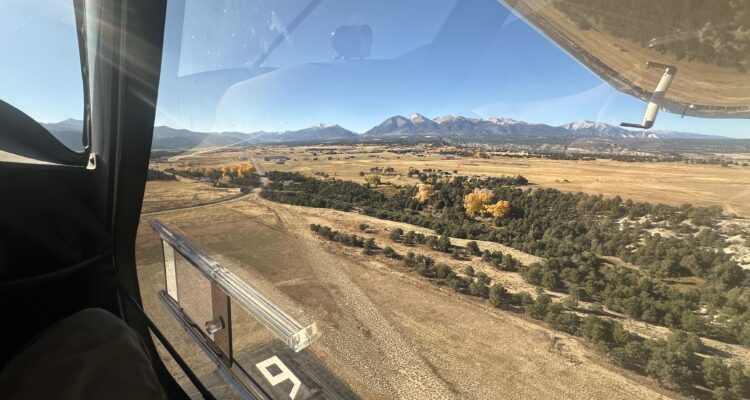(According to People Who’ve Actually Done It)
If you’ve made it this far—Commercial Pilot certificate in hand—you already know what’s next: You need hours. A lot of them. Nobody cares about your GPA or the shiny new epaulettes your mom bought you as a gift until your logbook shows four digits. The new target is 1,500 and unrestricted ATP minimums.
That’s where flight time-building comes in: the necessary, soul-crushing stretch between training and a real paycheck. You can get there by instructing, towing banners, dropping skydivers or you can just go fly the hours yourself. Spoiler: none of these options are glamorous.
It’s Not For Anyone—But Neither is Aviation
Instructing, also known as “the art of getting into an airplane with someone trying to kill you,” isn’t for everyone and it’s getting harder to find work doing it as everyone begins to realize that one instructor can produce several more and… well, that sounds like the business model of a skincare brand your weird aunt is into. You might get lucky finding another low-hour job, but probably not. So you turn to the world of Facebook groups, time-building programs and trying to find the least-expensive time you can to qualify yourself.
Time-building also isn’t for everyone. But if you’re going to be an airline pilot, spending time in cruise flying by instruments and monitoring another pilot is exactly the job, so if time-building isn’t, the airlines might not be, either. If you’re going to do it, do it intelligently. Here’s what time-building programs really look like—without the hype.
The Pros of Flight Time-Building Programs
It’s Fast
The biggest advantage of a time-building program is obvious: you fly and you log time. No waiting on students, no begging dispatch for a schedule. If you can afford it, you can hit 1,500 hours in months instead of years.
You wake up, you fly, you land, you fuel, you do it again. It’s repetitive, but it’s progress. The only variables are your own endurance, maintenance and the weather. But those things exist in any case.
You Actually Fly
As a CFI, you spend most of your time teaching people not to die, not improving your own flying. Time-building strips that away. It’s just you, another pilot and the airplane. You can plan interesting routes, go into different types of airspace, fly at night, work on IFR proficiency—all the things you say you’ll do as an instructor but never actually have time for.
If you want to build legitimate experience, not just left-turns and practice area circles, this is where it happens.
It’s Cheaper Than It Looks (Long-Term)
At first glance, paying for 1,000 hours of airplane rental looks insane. But when you run the numbers, flight time-building can cost less than two years of underpaid instructing once you factor in rent, food and the slow erosion of your will to live.
The large majority of instructors don’t make money—they accumulate hours painfully slowly while living on fumes. Time-building programs get you to employability faster. That’s critical when all that matters when you do get to an airline is your seniority number. As the Captain of a 737 once told me while I was sitting on a jumpseat wishing I was getting paid as much to be there as he was, “Everyone realizes sooner or later that the only thing that matters is the paycheck. A paycheck is all about seniority. Stop f***ing around and get to where you’re going.”
Time-building programs mean spending more now and earning much, much more later. Google how much that senior captain makes, then imagine that the extra year or two you’re going to spend building your time teaching or begging for a right seat gig on social media means one less year making that much before you time out at 65. The amount you’ll spend time-building now seems like a small investment.
You Control the Experience
If you choose your airplanes and time-building programs well, time-building can actually be productive. You get to decide where to go, and what to focus on. No one’s telling you what lesson to teach or how to fly a steep turn. You’re just logging time, approaches and strengthening those instrument habits.
Of course, if you pick the wrong partner, you’ll spend all night in a glorified phone booth with someone who thinks ForeFlight makes them Chuck Yeager. But unlike instructing, you don’t have to tolerate them for months while they figure out how to fly.
The Cons of Flight Time-Building
It’s Expensive (Up Front)
No matter how affordable a time-building program looks on paper, you’ll still have to write a large check before you even start. The hourly rate might be low, but the lump sum hurts.
Some time-building programs charge as much as $125/h for a single seat. (!!) Yet others make it substantially more affordable.
At The Flight School at Meadow Lake, for example, our time-building program runs $55/hour (wet) when you prepay a 50-hour block. That’s about as cheap as it gets for a real airplane, but it still adds up fast when you’re aiming for 1,000 hours.
You can finance it, but you’ll be paying for those hours one way or another—so fly them like they count.
It Gets Boring
Flying for the sake of flying sounds romantic until you’re three weeks in and every airport within 150 miles starts to look the same. You’ll find new ways to make it interesting—routes, night flights, breakfast runs—but monotony is part of the deal. It’s also part of the deal of being an airline pilot, so consider it training.
And really, this is where professionalism starts. If you can stay sharp and disciplined through 500 hours of déjà vu, you’re ready for the airlines.
People Are Annoying
Most time-building programs pair pilots to share costs. It’s efficient and more affordable, but the cockpit is small and people have quirks. You’ll learn everything about your flying partner, including the stuff you wish you hadn’t. Some pairs get along fine. Others barely survive the first week and have to switch it up.
It’s not personal—it’s physics. Two people, one tiny box, and a lot of time to kill. Programs like The Flight School at Meadow Lake rotate partners to make this easier.
How to Not Waste Your Money Time-Building
If you’re going to buy hours, treat them like training. Fly at night. File IFR. Make it count for something. Don’t just orbit the pattern because it’s cheap.
Keep your logbook meticulous. Build habits that will still matter when you’re flying jets. Use the time to become comfortable in discomfort. That’s what separates the 1,500-hour pilots who know what they’re doing from the ones who just have 1,500 hours.
The Flight School at Meadow Lake Time-Building Program
We don’t romanticize it. Time-building is a grind, and we know it. But it doesn’t have to bankrupt you or drag on forever. Sure, you can go cool places and have fun, but it will still be a grind.
At The Flight School at Meadow Lake, we run time-building programs designed for efficiency and sanity. Our block rate is $55/hour wet, prepaid in 50-hour chunks. Housing is available—$200/week crash-pad style or $350/week for a private room.
If you want to accelerate things, we can also help you buy into or purchase an aircraft as part of your program. It cuts costs further, gives you more flexibility and you end up with equity instead of receipts.
You can fly as much as you want and weather allows—30, 40, 60 hours a week—and finish the grind in a few short months instead of dragging it out for years.
At The End of The Day, One Thing Matters: Hours
Flight time-building isn’t fun. It’s not glamorous. But it’s the most direct route between where you are now and your first real flying job. You’ll spend a lot of money, probably get bored, and question your choices more than once.
Then one day, you’ll hit 1,500 hours, get a job, and realize you get to do it for real money now. You did it. You survived. You’re employable. Now you can grind away the next thirty to forty years of your life doing the same thing and making an insane return on your piddly fifty thousand dollar investment in time.
Just don’t pretend it was anything other than what it is: necessary, miserable (if you’re in a mood like I clearly am right now) and absolutely worth it.





